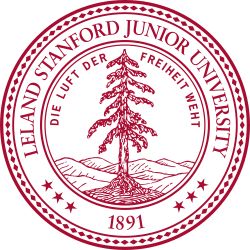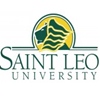Introduction and Overview
Location: Located in Bowling Green, northeastern Ohio, the city has about 30,000 residents and is 15 miles south of Toledo.
Student size: The main campus currently has 21,000 students, including more than 3,000 graduate students, and international students from 55 countries.
Professional settings: 14 associate degrees, more than 200 bachelor's degrees, 65 master's degrees and 14 doctoral degrees are offered.
History and establishment time
Founded on September 27, 1910, it was originally a normal school specializing in teacher training and education, named Bowling Green State Normal School. In 1929, it was renamed Bowling Green State College and became Bowling Green State University in 1935.
School strength
Faculty: It has 1,982 academic staff, including 1,109 teachers and 873 graduate assistants.
Teaching facilities: It has two art galleries, a theater and art center with a strong artistic temperament, a modern scientific laboratory, a sports and fitness center, a modern entertainment and leisure center, etc. The library has a rich collection of more than 6 million books.
Nature of the institution
It is a public research university, part of the Ohio University system, and is classified as "R2: Doctoral Degree Granting University-High Research Activity".
Educational philosophy
It is committed to providing a comprehensive educational experience, focusing not only on students' academic achievements, but also on students' personal development and career planning. Through innovative educational methods and practical opportunities, it helps students shape their own future, cultivates students' comprehensive qualities and social responsibility, and enables them to successfully integrate into society and contribute to society after graduation.
Key laboratories and disciplines
Key disciplines:
School of Business: MBA and accounting majors are AACSB-accredited, and the School of Business also pioneered the master's degree in organizational development in 1975. Accounting, economics, statistics and other majors are relatively famous.
College of Art: Digital art, three-dimensional art, and graphic art are quite distinctive, including computer animation, digital image processing, interactive media, ceramics, fiber, glass, metal jewelry, sculpture, painting, oil painting, photography, and printmaking.
College of Communication: The communication major ranks 20th in the United States, and the majors such as journalism and visual communication are also well-known.
College of Education: Provides future teachers with extensive field classroom experience and new technologies to help them succeed in the field of education.
Key Laboratories: It has advanced research facilities in natural sciences and social sciences, but no more public detailed information has been found for specific laboratories.
Faculty
There are 7 colleges and departments, namely the School of Applied Science and Technology, the School of Architecture and Planning, the School of Business, the School of Communications, Information and Media, the School of Art, the School of Education, and the School of Science and Humanities.
Ranking
The USNEWS 2012 edition rated it as a first-level national university in the United States. The specific ranking of the school was not found in the 2024 ranking of "U.S. News and World Report", but it was once rated as a third-level national university in the United States (USNEWS before 2011 edition).
In the 2025 ranking of the Wall Street Journal, it was named the first public university that students in the Midwest would choose again, and ranked first in Ohio for student experience.
Cost
Undergraduate tuition: Undergraduate tuition for international students is about $25,000 per year, and the specific cost varies by major.
Graduate tuition: Graduate tuition for different majors also varies, generally between $20,000 and $30,000 per year.
Campus environment
Campus facilities: It covers an area of 1,338 hectares and has more than 100 buildings. There are free buses on campus, and there are also 24-hour on-campus police patrols. Two art galleries, a theater art center with a strong artistic temperament, a modern scientific laboratory, a sports and fitness center, a modern entertainment and leisure center, a library and other facilities are complete.
Cultural atmosphere: There are more than 300 student clubs, and students can participate in various club activities according to their interests, such as drama/drama clubs, newspapers, radio stations, choirs, etc. The school also often holds many extracurricular activities, such as the annual three-day Bach Festival, which creates a strong artistic and cultural atmosphere.
Surrounding environment: Bowling Green is a quiet, beautiful, and well-safe city. The local residents are friendly and enthusiastic, and the beautiful natural scenery makes it well-known in Ohio. The city has strong economic strength, a relatively high standard of living for residents, and a variety of sports and entertainment facilities at reasonable prices.
-

Harvard University
-

Massachusetts Institute of Technology
-

South University
-

University of West Georgia
-

Stanford University
-

Northwest Nazarene University
-

Hawaii Pacific University
-

Shorter University
-

Nova Southeastern University
-

Saint Leo University
-

Mesoamerican University
-

Istmo University
-

Mariano Galvez University of Guatemala
-

Regional University of Guatemala
-

Galileo University
-

Francisco Marroquín University
-

Rafael Landívar University
-

University of the Valley of Guatemala
-

University of San Carlos of Guatemala
-

Technological Institute of Tlaxcala Plateau
-

Golfo University
-

Technological University of South Sonora
-

Technological University of Huejotzingo
-

Tizimín Institute of Technology
-

Chilpancingo Institute of Technology

